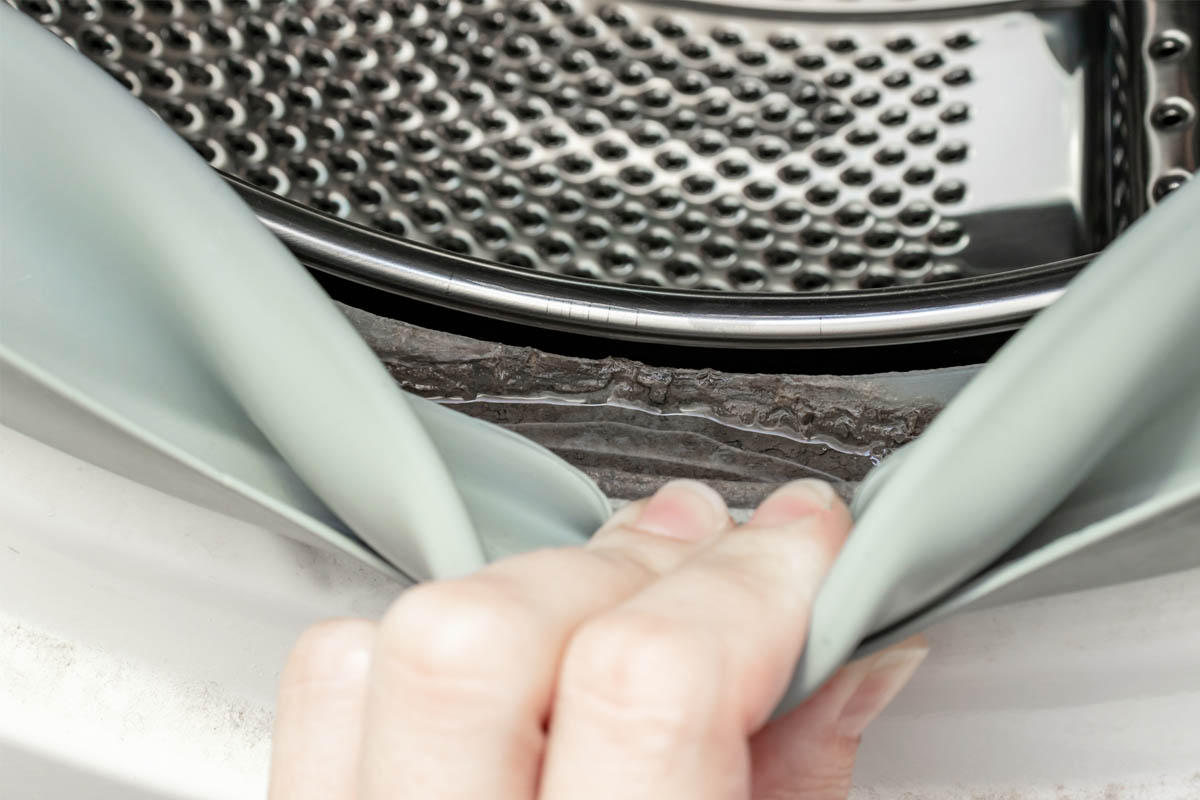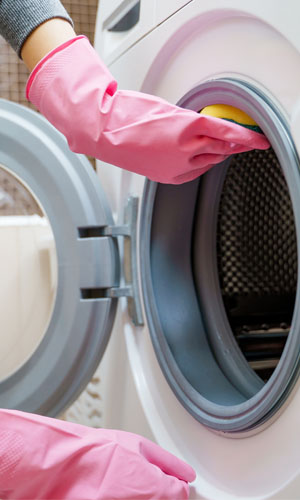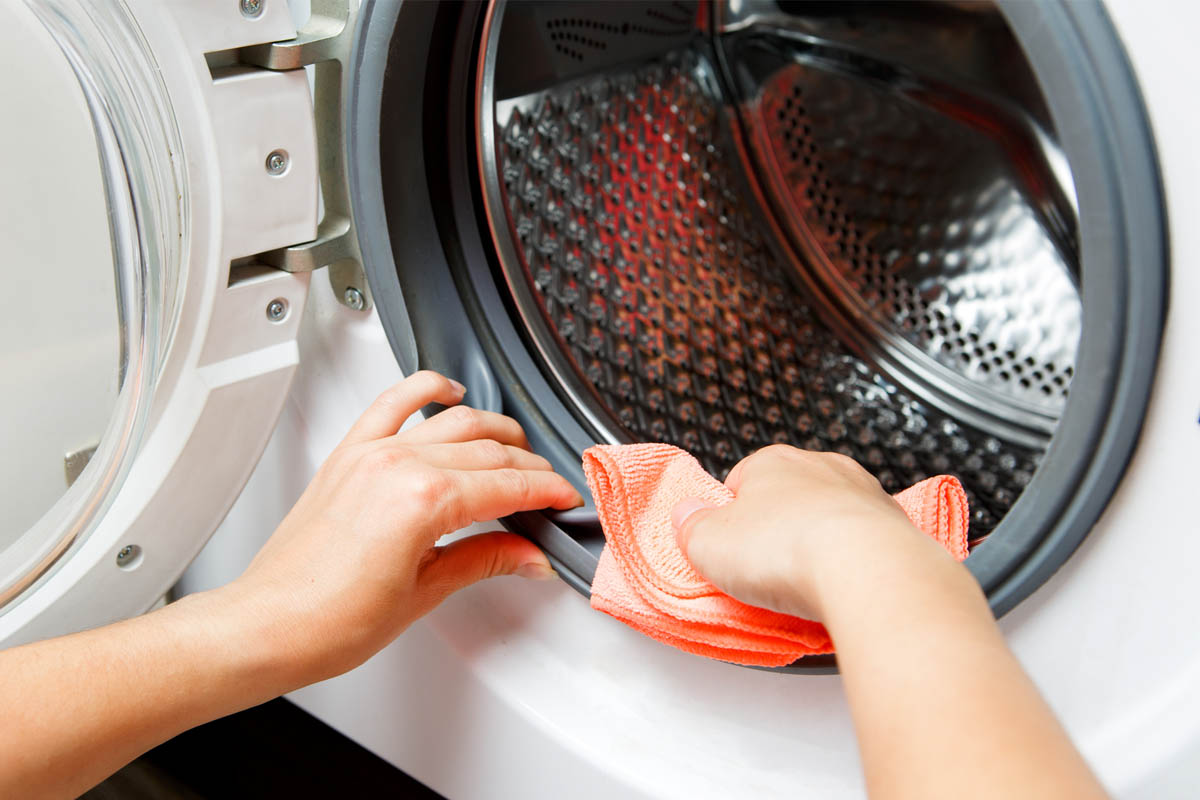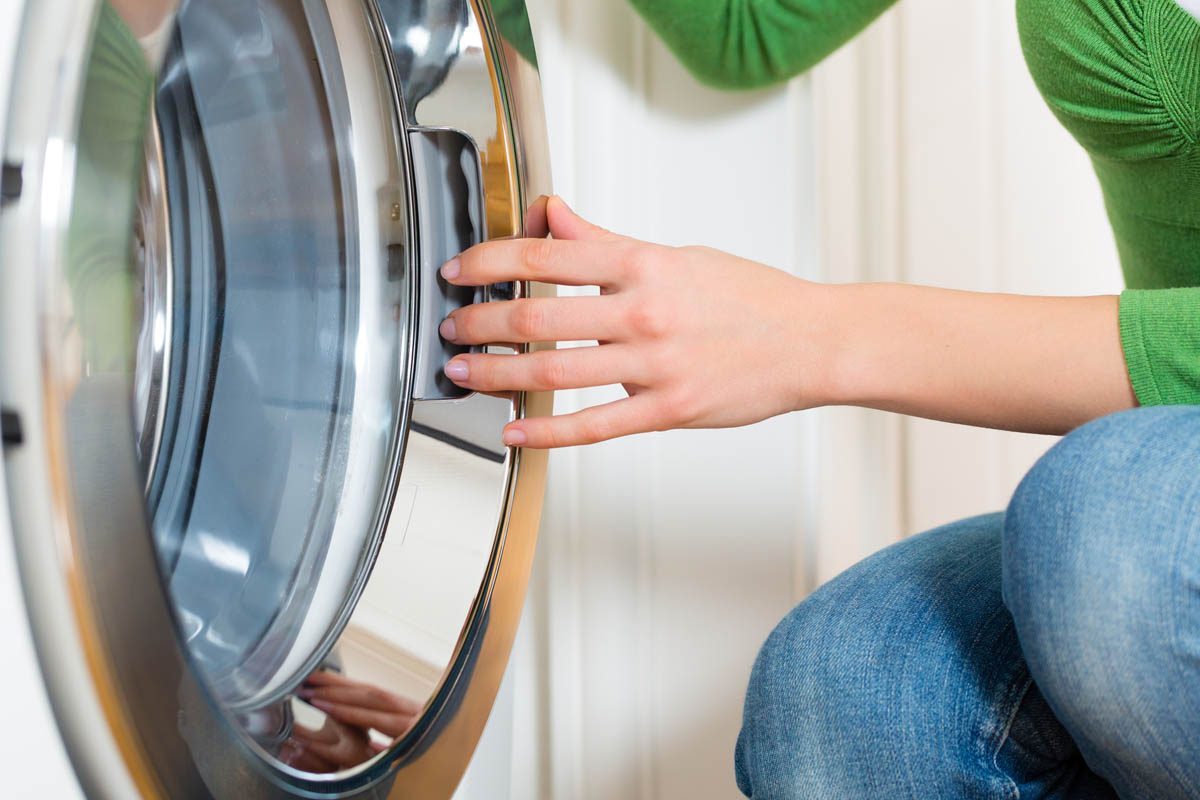

We may earn revenue from the products available on this page and participate in affiliate programs. Learn More ›
Over time, the moisture inside the washing machine can get trapped in hard to reach places and can easily become a great place for mold to grow. Seals, gaskets, and dispensers are just a few areas that you likely don’t check when you clean your machine, but these same areas are some of the worst places for mold growth because they often don’t dry out properly after a wash cycle. Combine the trapped moisture with the humidity in your laundry room, and you have the perfect environment for mold growth.
Even if you can’t see it, mold can easily attach to your clothing, causing respiratory issues like sneezing, coughing, and wheezing. It can even cause your body to develop a fever. While these symptoms aren’t fun, for those who are more susceptible, like kids, the elderly, or people with preexisting respiratory issues, the consequences could be more severe. To keep your lungs happy and your clothes clean, try these five fixes for mold in the washing machine.

1. Clean your appliance regularly and air dry your washing machine.
This method may be one that you have already tried, but the key to cleaning your washer is to scrub all those hidden areas that you may not normally think to clean. Remove the soap, bleach, and softener dispensers so that you can clean them individually, and so that you can clean the areas where they fit. Clean the inside of the drum using a rag or brush and an antimicrobial cleaning spray, paying close attention to the rubber gasket on front-load washers and the lip of the door on top-load washers.
Once you have finished scrubbing the front and inside of the washer, check the hose in the back to make sure that mold has not been accumulating on the hose connectors. After cleaning, dry each part carefully, and adopt a habit of ensuring that each part is given ample time to air dry after each wash. A towel or rag may help to dry the parts that it can reach, but for the best results, leave the washer open to the air, taking special care with areas that have little airflow. If your machine dries out properly after each cycle, mold will not have an adequate environment for growth.
2. Watch out for machine-specific problem areas.
Front-load washers get a lot of bad press for the mold problems that consistently occur on the inside of the rubber seal on the washer door, but top-load washers have their own issues. The door on a top-load model often has a metal lip that is frequently overlooked during cleaning. The lip on the underside of the basin is also an area that gets missed when the washer is being cleaned.
However, front-load washers deserve some of the criticism they have received. The gasket on the front-load machines seals in the water during a wash cycle, but unless it is properly washed and dried, it holds that moisture for much longer than any other area on the machine. This design creates an ideal place for mold to grow, so thoroughly air-drying is critical.

3. Remove unwanted odors.
If mold has been a problem in the past, or your machine has built-up deposits of hair, soap, and dirt, it can start to smell terrible. To remove these odors and sanitize your machine, begin by cleaning the machine carefully so that any leftover gunk in those difficult-to-access crevices is removed before you sanitize the machine. This is an important step, as your machine will continue to smell if the source is not removed beforehand.
Next, you should set your washer to its highest temperature setting and add bleach directly to the drum, four cups for a front-load washer or two cups for a top-load washer. Start the cycle and let the tub fill, allowing the agitator to mix the bleach into the water. At this point, stop the cycle and let the bleach solution sit in the washer for half an hour before continuing the cycle. After the conclusion of this cycle, run the machine through a rinse cycle to remove all traces of the bleach, then repeat these steps using four cups of plain white vinegar instead of bleach. This should remove all unwanted odors and kill any hidden bacteria or mold.
4. Use a laundry additive designed to remove mold.
When you are preparing your next load of laundry, it takes almost no time at all to add a small amount of laundry additive in with your clothes, yet this simple step could save your lungs from breathing in harmful mold spores. Laundry additives like EC3 (available on Amazon) use antimicrobial ingredients, such as tea tree oil, to eliminate mold spores in your washing machine and on your clothing so that your laundry comes out free of mold and smelling better. While this fix won’t get rid of any growing mold in the washing machine, it will limit the amount of mold that gets on your clothes.

5. Upgrade to a new appliance with microbial defense features.
If you have a machine that seems to grow mold no matter what you do to clean it and keep it dry, then you may want to consider investing in a new washer that comes with microbial defense features built in during the manufacturing process. This process produces a surface within the machine that penetrates the cell wall of any microorganism that comes into contact with it, preventing the microorganism from functioning or multiplying. While you will still need to clean your machine regularly, these machines offer added protection against bacteria, yeasts, molds, and fungi. When combined with proper cleaning and drying techniques, this protection will keep your laundry smelling great and free of harmful microorganisms.
